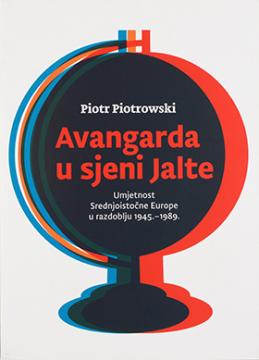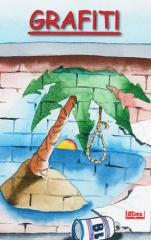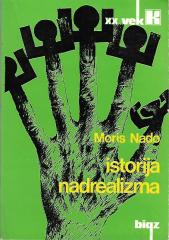
Avangarda u sjeni Jalte: umjetnost Srednjoistočne Europe u razdoblju 1945.–1989.
A complex study of art production in the area between the "Iron Curtain" and the borders of the former Soviet Union, which shows the events on the art scene of Bulgaria, Czechoslovakia, Germany, Hungary, Poland, Romania and the former Yugoslavia.
The author places special emphasis on the relationship between artistic production and political events, focusing in the first part of the book on poetic choices that, due to their resistance to the dominant ideological code of social-realism, i.e. experimental character and engaged attitude towards social reality, today we mark with the term avant-garde.
Analyzing and explaining the post-war manifestations of surrealism in the Czech Republic, Poland and Hungary, neo-constructivism in Croatia (EXAT 51) and Hungary, Piotrowski thus examines the evolution of modernism in the Central European cultural space, and the nature and ways and methods of its deviation from the Stalinist projection socially (ideologically) functional arts. The neo-avant-garde of the late 60s and early 70s grew out of post-war experiences: body art, conceptual and performance art, which further sharpened the critical attitude towards the dominant political discourse, foreshadowing its complete disintegration at the beginning of the 80s. The book ends with a description of the end of communist rule, whose gradual erosion, accompanied by the strengthening of consumerism and political pragmatism and the constant conflict with avant-garde, critical forms of artistic practice forms a kind of "red thread" of this study.
It is a publication that, due to the abundance of lesser-known art materials, will be equally interesting to art historians, art critics, students, and thanks to the popular way of storytelling and the emphatically contextual approach to the chosen topic and to a much wider cultural public. Its special value - from the aspect of Croatian culture - lies in the fact that it is a study of a Central European author, who knows and interprets the specificities of our post-war art much better. Rejecting the highly selective, canonical principles of Western European art history, Piotrowski convincingly explains, with a series of concrete examples, the most memorable, decisively important moments in its recent history and positions it in an argumentative and very precise manner in the context of the international art scene of the observed period.
Equipped with over 220 illustrations, many of which bring works unknown not only to Western readers, but also to readers from our environment, Piotr Piotrowski's book Avangard in the shadow of Yalta. The art of Central-Eastern Europe in the period 1945-1989 is a fascinating display of artistic production created in time and space, which is of key importance for the weaving of contemporary European culture.
Two copies are available




